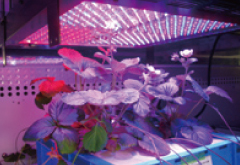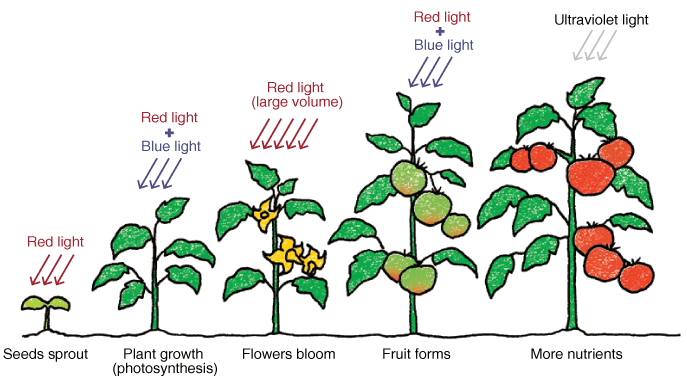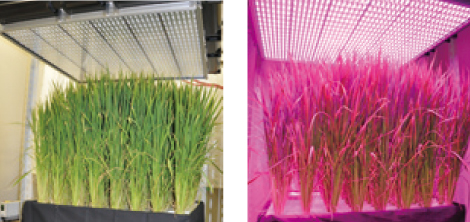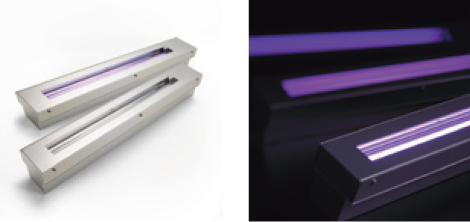New Industries Originating from Agriculture
Today, we can purchase a rich variety of fresh fruits and vegetables almost any time of the year. Since agriculture shifted from open fields to greenhouses and other enclosed environments in the 1970s, farmers have been able to meet the needs of consumers for fresh produce throughout the year.
Today, consumer needs involving food have advanced even further to include preventive health care. In response, the agricultural sector has started to create “plant factories” that grow produce with both nutritional and medicinal benefits.
Our Constantly Evolving Perception of Food
People have always perceived food as a source of calories, minerals, vitamins and other vital nutrients. But since the 1970s, there has been a growing demand for food that tastes better and makes life more enjoyable and fulfilling. In Japan, one result was demand for a year-round supply of fresh vegetables that are normally seasonal and cannot be imported. The need for these vegetables grew steadily since the 1970s, mainly in the restaurant industry. Today, about 80% of Japan’s tomatoes, cucumbers, bell peppers and other vegetables are grown in artificial environments to maintain a steady supply all year round.
The Transformation of Agriculture
Seeking ways to grow vegetables and other agricultural products continuously and efficiently has been a major theme of agricultural research for many years. The goal is to grow these plants even in locations and seasons where they do not survive in nature. Traditional agriculture relies on experience and intuition to grow crops outdoors where they are vulnerable to changes in the weather. But agriculture today uses high-tech equipment and environmental control systems to grow plants scientifically. Only in this way can the needs of consumers be satisfied. To advance to the next step, research is currently focused on two new themes. One is “plant factories” that use artificial light. The other is “functional vegetables” that incorporate antibiotics, vaccines or other substances that enable the prevention of health problems through food.
The Shared Origins of Functional Vegetables and Medicinal Foods
Many common foods contain well-known substances that promote good health. For instance, tomatoes have lycopene, tea has catechin and blueberries have anthocyanin. New substances are still being discovered. One example is lutein, which is found in large quantities in turnip leaf and spinach. A powerful antioxidant, lutein is believed to help prevent eye problems like cataracts and macular degeneration. Basic research in fields like genetic engineering may produce more breakthroughs. One current research theme involves incorporating an influenza vaccine in rice. This “edible vaccine” would eliminate the need for injections. Agricultural products with both nutritional and medicinal value have many advantages. They can be consumed safely by people of all ages, and effectively provide vaccines in unsanitary regions without the use of syringes. The same technology can also be used to place vaccines and drugs in animal feed. Overall, there is considerable potential for preventing infectious diseases and other hazards.
Light and Plant Factories

How do you grow functional vegetables? The main requirement is an environment that is not affected by the weather, regional characteristics or other aspects of the natural environment. Plant factories with completely artificial environments are the answer. These facilities can use a number of advantages to provide a consistent supply of fruits and vegetables: no agricultural chemicals are needed because the factory shuts out insects and diseases; harvest volumes and times can be accurately predicted; and furthermore, only the minimum amounts of water and fertilizer are required. Another advantage is the ability to artificially control temperature, humidity, air currents, the level of CO2 and other items that determine the growing environment. With this flexibility, growers can produce crops that have added value by consistently including desired properties and functions. Critical to creating this added value is the most important factor affecting the growth of plants: light.
Light Gives Life to Plants
Light—essential to the survival of plants and animals. We tend to take the immense benefits that light provides for granted. But we still have much to learn about the properties of light. Now, let’s study how agriculture becomes a science in a plant factory with light.
Do Plants “See” Light?
Seeds sprout in the spring. Then plants grow rapidly in the warmth of summer and produce flowers. In the autumn, we harvest fruit and other end results of this growth. How do plants know when the time is right for each step? Plants are subject to fluctuations in temperature, humidity and other environmental conditions. The most importance of these is the wavelength of light, and the duration of exposure. Red light is needed for seeds to sprout. For growth (photosynthesis), plants require red and blue light. Flowers bloom when there is even more red light along with long hours of exposure. Then fruit, grain or other types of food emerge under red and blue light. Ultraviolet light is needed to make agricultural products even more nutritious. Plants time their growth to precisely match seasonal changes in the wavelengths of light and hours of sunlight. Clearly, plants have some type of “eye” that detects the wavelengths and the duration of exposure to light. This enables them to control the timing of their growth.
The Relationship Between Light and How Plants Grow

Growing Plants with Light from USHIO
Skillful use of this “eye” allows growing plants to achieve specific objectives. For instance, photosynthesis produces sugar when a plant’s chlorophyll is exposed to light with a wavelength of 400–700nm. The amount of sugar is almost directly proportional to the intensity of the light. We can use this knowledge to expose plants to light of a specific frequency during each phase of its development. Growing plants in this manner will open the way to producing functional vegetables while controlling cultivation times and the amount of nutrients they contain.
One example is the use of rice as an “edible vaccine.” Scientists want to know what kind of compounds will develop in rice with variations in the timing, wavelengths, and length of exposure to light. Research has been performed with a variety of light sources. To support studies using LEDs, USHIO partnered with Chiba University to develop a high-output LED unit to enable grain to be grown under artificial light for the first time.* The unit produces two types of light. Red LEDs generate the 660nm wavelength light needed for photosynthesis. Blue LEDs provide the light required for morphogenesis, the biological process in which a plant forms its distinctive structure. USHIO combined these LEDs with its exclusive technologies for dissipating heat, mounting LEDs and creating optical designs. Using this device facilitates very efficient tests to ascertain how each wavelength of light generated by LEDs influences the growth of plants. Chiba University is already using USHIO’s innovative LED unit to perform this research.
*First time in the world for grain (as of October 31, 2010)

Rice is bathed in light from USHIO’s high-output LED units. This trial is the first time in the world that grain has been grown under artificial light.
Weeds vs. UV Light
In other research, scientists are studying ways to use light to intentionally prevent plants from growing. Currently, herbicides and manual labor are the only ways to remove weeds. Although modern herbicides are safe to use, there are concerns about the considerable detrimental effect on the environment. Furthermore, herbicides are not suitable for parks, along highways and railroads, and in many other locations. Removing these weeds by hand is a costly task for local governments and companies. The solution is to use ultraviolet rays to prevent weeds from growing.
Plants grow as chlorophyll uses the energy in light to synthesize adenosine triphosphate (ATP). For red light, plants take in only the amount of light that they can use. But when exposed to a type of UV rays that normally do not reach the Earth’s surface, the energy in this light combines with oxygen to produce reactive oxygen. The resulting oxidation causes the plant to die. At Utsunomiya University, scientists are using USHIO’s UV-XEFL® mercury-free light source to expose plants briefly to UV radiation. The aims are to stop the growth of vines and prevent flowers from blooming and pollinating. This research may lead to new ways to block growth and the production of seeds by unwanted plants.
USHIO’s Vision
As you can see, there are still many unexplored frontiers in the field of light. Agriculture is just one of many areas where progress in the use of light can yield major benefits. USHIO has much expertise in optical technologies cultivated in industrial fields like semiconductors, LCDs and electronic components. We are determined to extend this know-how to other areas. Air and water pollution, optical medical care and diagnoses, and new energy sources are just a few of the many fields where we are applying our expertise. We will continue to take on these global challenges, finding innovative solutions that use light.

The mercury-free UV-XEFL® is the world’s first UV light source that permits selection of a particular wavelength

